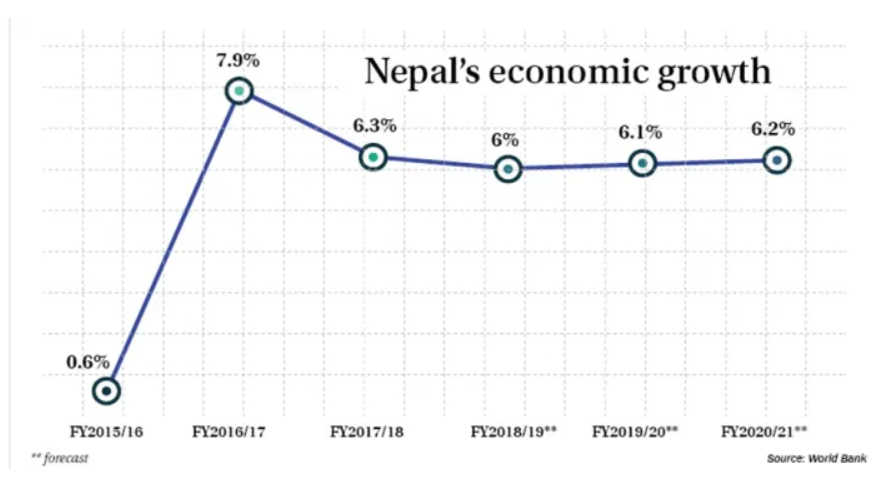What is a report Writing? – “भाषा प्रवीणता परीक्षा विशेष”

Report writing is the process of creating a formal document that conveys information, analysis, findings, or recommendations on a specific topic, issue, or situation. Reports are a common form of written communication in various professional and academic settings. They serve to inform, document, and provide insights into a particular subject matter, often with the goal of facilitating decision-making, solving problems, or presenting research results.
Key characteristics of report writing include:
- Objective: Reports are typically written in an objective and factual manner, focusing on presenting information and analysis rather than personal opinions or emotions.
- Structure: Reports follow a structured format with specific sections, including an introduction, methodology, findings, analysis, conclusions, and recommendations. The structure may vary depending on the type of report.
- Formality: Reports are typically formal documents and are expected to meet certain standards of language and style. They should be well-organized and use appropriate terminology.
- Audience: Reports are written for a specific audience, which can be diverse, including supervisors, colleagues, clients, or the general public. The content and level of detail in the report should be tailored to the needs of the audience.
- Evidence-Based: Reports often rely on evidence, data, research, and analysis to support their claims, findings, and recommendations. Proper citations and references are essential for credibility.
- Purpose: The purpose of a report can vary widely. It may be to inform, investigate, analyze, summarize, evaluate, propose solutions, or document research findings.
Types of reports include:
- Business Reports: These include annual reports, financial reports, marketing reports, and feasibility studies, among others, to inform business decisions.
- Technical Reports: These are used in scientific and engineering fields to document research, experiments, and technical information.
- Academic Reports: These are often research papers, laboratory reports, or thesis reports that present the findings of academic research.
- Government Reports: These are prepared by government agencies to inform the public or make recommendations to policymakers.
- Investigative Reports: These are used in legal and law enforcement contexts to document investigations and findings.
- Project Reports: These summarize the progress, results, and outcomes of projects, whether in business or other fields.
Report writing is an essential skill in many professions and academic disciplines, as it helps individuals and organizations make informed decisions, document activities, and communicate effectively. The specific format and requirements for report writing may vary depending on the context, so it’s important to adhere to any guidelines or templates provided.
A standard report writing format may vary depending on the specific type of report and the organization’s requirements. However, here is a general report writing format that you can adapt to different situations:
Title Page (Optional):
- The title page is typically used for more formal reports and may include the report title, the author’s name, the date, the recipient’s name, and any relevant logos or institutional information.
Table of Contents (Optional):
- For longer reports, a table of contents is used to list major sections, headings, and page numbers for easy navigation.
Executive Summary (Optional):
- An executive summary provides a concise overview of the report, highlighting its key points, findings, and recommendations. It is typically placed at the beginning of the report for busy readers who want a quick summary.
1. Introduction:
- The introduction sets the stage for the report, providing background information, the purpose of the report, and an outline of what the report will cover.
2. Methodology (if applicable):
- In research or investigative reports, the methodology section explains the methods used to collect data, conduct experiments, or investigate a subject. It should include details about data sources, data collection techniques, and analysis methods.
3. Findings or Body of the Report:
- This section is the core of the report and is broken down into subsections or chapters, each addressing a specific aspect of the topic. The findings section includes detailed information, analysis, evidence, and results. Use headings, subheadings, and bullet points for clarity.
4. Discussion (if applicable):
- In some reports, a separate discussion section is included to interpret the findings, provide context, and offer insights. This is particularly common in research reports.
5. Conclusions:
- The conclusions section summarizes the main findings and interpretations, emphasizing the report’s key takeaways.
6. Recommendations (if applicable):
- If the report includes recommendations, this section outlines specific actions or steps to be taken based on the findings and conclusions.
7. Appendices (if applicable):
- Appendices are used to include additional information, data, charts, graphs, photographs, or any content that supports the report but is not essential in the main body. Each appendix should be labeled and referenced in the report.
8. References (or Bibliography):
- If the report references external sources, it should include a list of citations or references. Follow a recognized citation style (e.g., APA, MLA, Chicago) depending on the report’s requirements.
9. Acknowledgments (Optional):
- If you want to acknowledge individuals or organizations that contributed to the report’s preparation, you can include an acknowledgments section.
10. Author Information (Optional):
- Some reports include a section that provides contact information for the report’s author or authors.
11. Date:
- Include the date of the report’s completion or publication.
12. Page Numbers:
- Number all report pages, typically starting from the introduction.
Keep in mind that the specific requirements and format of a report may vary based on the organization’s guidelines and the purpose of the report. It’s essential to follow any specific formatting and style requirements provided by your organization or the report’s recipients.
Report writing topics can cover a wide range of subjects and can be tailored to various purposes, including academic, professional, or research-oriented reports. Here are some report writing topics that you can consider:
- The Impact of Climate Change on [Specific Region or Ecosystem]
- Investigate the effects of climate change on a particular area, such as a coastal region, forest, or urban environment.
- Cybersecurity Threats and Strategies for [Specific Industry or Organization]
- Analyze the cybersecurity risks and propose strategies for a specific sector, like healthcare, finance, or government agencies.
- A Comparative Study of [Two or More Countries’] Healthcare Systems
- Compare and contrast healthcare systems, focusing on access, quality, and efficiency.
- The Effects of Social Media on [Specific Aspect of Society]
- Explore the impact of social media on politics, mental health, relationships, or other social dynamics.
- Environmental Impact Assessment for [Specific Project or Development]
- Conduct an environmental impact assessment for a construction project, industrial development, or infrastructure upgrade.
- The Role of Artificial Intelligence in [Specific Industry or Field]
- Investigate how AI is transforming industries like healthcare, finance, education, or manufacturing.
- A Study on Workplace Diversity and Inclusion Initiatives
- Evaluate diversity and inclusion programs in organizations and their impact on workplace culture.
- The Effects of Remote Work on Employee Productivity and Well-Being
- Analyze the advantages and disadvantages of remote work arrangements in a post-pandemic world.
- The Impact of Renewable Energy Sources on [Specific Region or Country]
- Examine the adoption and benefits of renewable energy in a particular geographic area.
- A Comparative Analysis of [Two or More Historical Events]
- Compare historical events, such as revolutions, wars, or political movements, and their consequences.
- The Future of Transportation: Trends and Innovations
- Investigate emerging trends and technologies in transportation, including electric vehicles, autonomous vehicles, and sustainable transport.
- The Role of Education in Economic Development
- Explore the relationship between education, skills development, and economic growth in a specific region or country.
- Food Security Challenges in [Specific Region or Country]
- Analyze the factors affecting food security, including agricultural practices, access to food, and climate change impacts.
- The Influence of [Specific Literary Work or Author] on Literature and Culture
- Conduct a literary analysis of a novel, poem, or author and their cultural impact.
- The Effects of Social Media Marketing on Consumer Behavior
- Investigate how social media marketing strategies influence consumer choices and brand loyalty.
- Ethical Considerations in [Specific Industry or Technology]
- Discuss ethical dilemmas in fields like artificial intelligence, genetic engineering, or data privacy.
- The Impact of COVID-19 on Global Health Systems and Preparedness
- Examine the effects of the COVID-19 pandemic on healthcare systems, public health policies, and global preparedness.
- A Study of Urbanization and Its Impact on [Specific Urban Area]
- Analyze the urbanization trends, challenges, and opportunities in a specific city or metropolitan region.
- The History and Significance of [Historical Monument or Landmark]
- Provide a historical overview of a famous monument, landmark, or heritage site.
- The Psychological Effects of [Specific Psychological Phenomenon]
- Investigate psychological phenomena like stress, addiction, or cognitive development and their impact on individuals.
When selecting a report writing topic, consider your interests, the report’s purpose, and your target audience. Tailor your topic to match the scope and objectives of the report assignment or project.
Here’s a simplified example of a report on the topic “The Effects of Social Media on Mental Health.” This example report includes the main sections commonly found in a report: Title Page, Table of Contents, Executive Summary, Introduction, Findings, Discussion, Conclusions, Recommendations, and References. Please note that this is a concise and general example for illustration purposes:
Title Page (Optional)
The Effects of Social Media on Mental Health
[Your Name] [Your Affiliation or Organization] [Date]
Table of Contents (Optional)
- Executive Summary
- Introduction
- Findings
- Discussion
- Conclusions
- Recommendations
- References
Executive Summary
This report examines the impact of social media usage on mental health. It provides an overview of findings related to the relationship between social media engagement and mental well-being. The report concludes with recommendations for individuals, parents, educators, and policymakers to address these concerns.
Introduction
Social media platforms have become integral parts of modern life, offering opportunities for communication, information sharing, and entertainment. However, concerns have been raised regarding their potential effects on users’ mental health. This report aims to explore the impact of social media on mental health and provide insights into the challenges and opportunities this phenomenon presents.
Findings
1. Time Spent on Social Media:
- Studies suggest that excessive time spent on social media is associated with increased feelings of loneliness, depression, and anxiety.
2. Social Comparison and Self-Esteem:
- Social media can contribute to unfavorable social comparisons, leading to lower self-esteem and feelings of inadequacy.
3. Cyberbullying:
- Cyberbullying on social media platforms can have severe mental health consequences for victims, including increased stress and depression.
4. Positive Effects:
- Some users experience social support, connection, and positive interactions on social media, which can positively affect mental well-being.
Discussion
The findings indicate a complex relationship between social media and mental health. While negative effects are documented, it is essential to recognize the potential for positive outcomes, such as social support. The extent of the impact depends on individual factors, usage patterns, and online behavior.
Conclusions
Social media plays a multifaceted role in mental health. While it can contribute to feelings of loneliness, depression, and anxiety, it can also provide valuable social connections. Users should be aware of their online behaviors, and parents, educators, and policymakers should promote responsible social media use.
Recommendations
- Promote Digital Literacy: Education programs should include digital literacy and online etiquette to empower individuals to make informed choices regarding their social media usage.
- Encourage Balanced Use: Individuals should establish healthy boundaries for their social media engagement and consider limiting screen time.
- Support for Victims: Cyberbullying victims should have access to resources and support systems for coping with the emotional toll of online harassment.
- Research and Awareness: Continued research is necessary to better understand the nuances of social media’s impact on mental health, and public awareness campaigns should be developed to address potential risks.
References
[Include a list of all sources and references cited in the report following a recognized citation style.]
Please note that a real report would typically include more detailed research findings, analysis, and additional references. The structure and content of a report may vary based on the specific requirements of the assignment or the organization.




